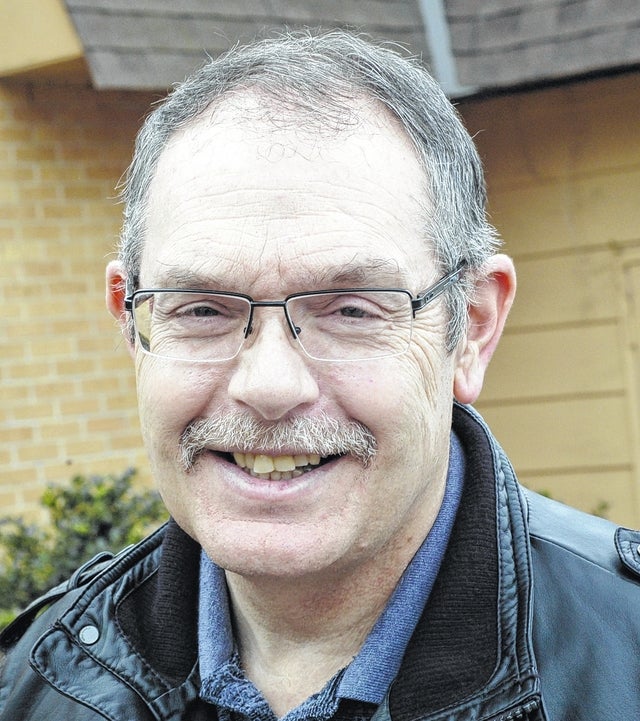Troup extension agent: Trap cropping — A case of fatal attraction, pt. 2
Published 12:00 am Friday, March 11, 2016

Final in a two-part series. The first installment appeared in the March 4 edition.
Trap cropping has proved to be another tool in our integrated pest management strategy. Gardeners and farmers are just beginning to experiment with growing trap crops. The next step is how do we implement a trap crop strategy.
There are different ways of growing trap crops depending on the mobility of the insect. Slow moving insects such as the Colorado potato beetle may respond to different arrangements than mobile insects such as cucumber beetles. Some of the spatial arrangements include strip trap cropping (STC), row trap cropping (RTC) and the most popular used by farmers, perimeter trap cropping (PTC).
Perimeter trap crops can be planted on all four sides of the main crop. If planted in sufficient density trap crops can provide a physical barrier to mobile insects. For an example, sorghum and sunflowers can be planted in 24- to 36-inch rows. The developing heads will attract stink bugs where they can be eliminated.
Row trap crops is a type of intercropping where the trap crops are alternated with the main crops. The trap crops can also shelter natural enemies and beneficial pollinators.
Densely planted buckwheat can be planted as a row trap crop for stink bugs and will also will shelter beneficial insects. By planting several row of trap crops you can slow the migration of the munchers and crunchers across the garden. This works if you have spotted the pattern of movement of the insects across the garden.
If your garden borders a woods or fence line which may harbor bad guys, you may have to plant more rows of a perimeter trap crop. If space is limited, you can also grow trap crops in pots and move them around to intercept the insects.
Once you got the bugs trapped the next step is to remove the insects. This can be accomplished in a number of ways. Hand removal and drowning the insects is one method. As soon as the bugs appear in low numbers, synthetic or biological insecticides can be used. Do not wait until they appear in large numbers. Scout the crop continually. If the bugs aren’t controlled early, the trap crops can act a “nursery crop” and cause more problems.
Trap crops are not a cure all but are a welcomed feature in our arsenal of controlling insects. For trap cropping to be successful, the gardeners must be diligent in both scouting for the insect pests and removing the offending bugs.
Upcoming Extension Classes:
Equipment maintenance class
A workshop on maintaining equipment, two-cycle and four-cycle equipment will be held on March 18 at the Ag Center from 8 a.m. to noon. This program will cover how to properly select and maintain common garden and landscape equipment.
Participants will be taught the basics of how to tune up equipment, winterize, as well as basic troubleshooting and repair procedures. The program will also go into detail on how to properly sharpen everything from knives to chainsaws. There will be discussion on tools and diagnostic equipment that are essential for repairing and servicing small engines.
Bob Westerfield and Brian Maddy will be the program speakers. The cost is $35.
Enhancing the safety of locally grown produce class
This class will provide a UGA certificate of training for those vegetable growers who which to receive food safety training. Enhancing the safety of locally grown produce on the farm, using land and water resources safely, using manure safely, providing worker hygiene safety, providing toilet and handwashing facilities, harvest, storing and transporting food safely. Helen Carter and Brian Maddy of the UGA Extension service will be the speakers. No cost.
Master naturalist extension volunteer course
Troup County Extension in conjunction with the Warnell School of Forestry at UGA will be offering the Georgia Master Naturalist Program from March 31 to June 5. Ten classes are planned. The MNEV class will explore the many facets of Georgia’s ecosystem. Some of the topics will include:
• Native plants and tree identification.
• Water ecosystems and how it relates to West Point Lake and the Chattahoochee River.
• Mammal, bird, and insect identification and the natural history of Georgia.
• Forest, water and wildlife interaction.
• Many field trips and hands-on activities are planned.
Cost: $175.
What’s going on in Extension?
Friday, March 11: Small Ruminant Training FAMACHA training and nutrition and March 24, reproduction, lambing, marketing, hoof trimming. Call Susan James, Meriwether County Extension, 706-672-4235 for registration information.
March 15: TCCA Meeting, 7 p.m. Meal is $ 6. Program begins at 7:30 p.m. Guest speaker: Mark Slay, “Managing your fertilizer needs.”
March 18: Equipment Maintenance Workshop, 9 a.m. to 3 p.m., Ag Center.
March 23: Farm to Market Food Safety Workshop. Become a certified food safety provider. Call the office for more details.
Tree seedlings can be ordered from the Georgia Forestry Commission, 706-845-4122.


